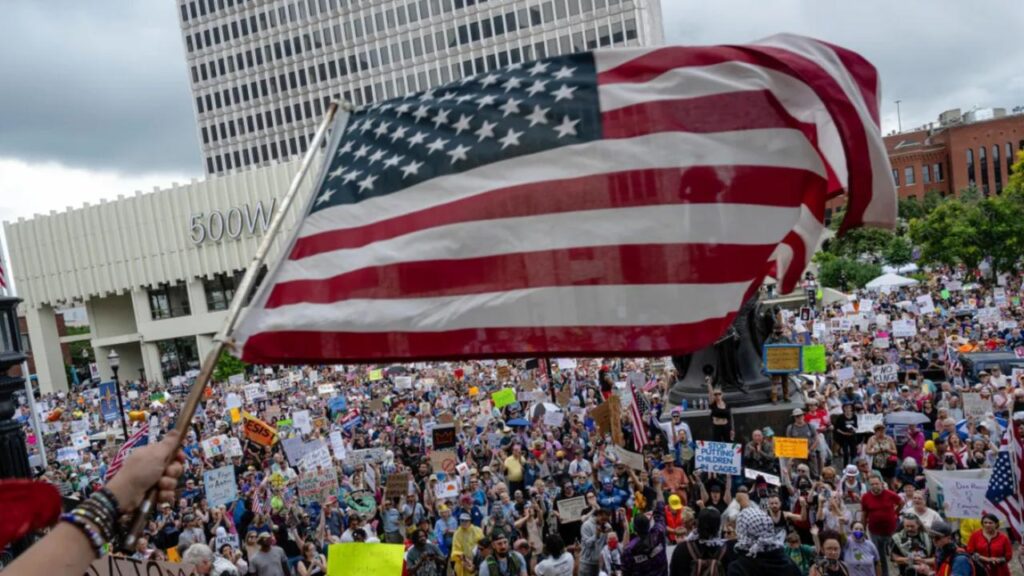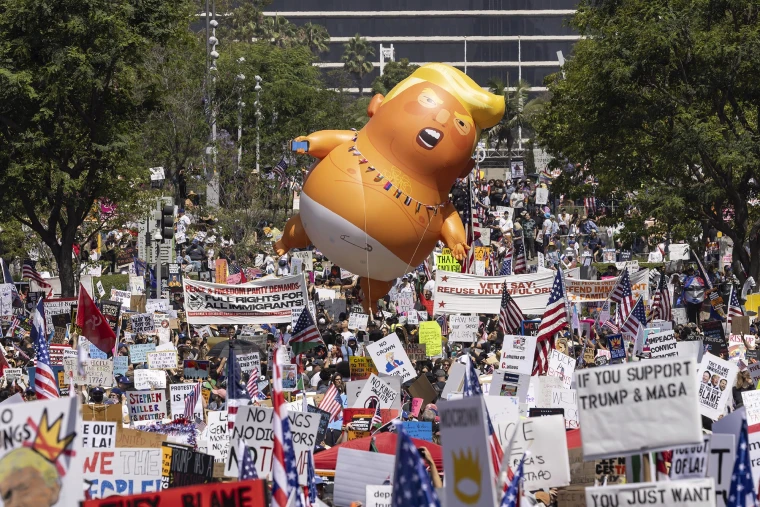In a fiery clash of spectacle and dissent, former President Donald Trump’s birthday military parade in Washington, D.C., may have done more to splinter the country than celebrate it. Billed as a patriotic tribute to the U.S. Army’s 250th anniversary, the June 14 event has since drawn global scrutiny and ignited a coast-to-coast protest movement—some calling it “the parade that broke America.”

The Parade That Broke America?
| Takeaway | Stat & Source |
|---|---|
| Parade attendance | 7,000 troops, 150 military vehicles |
| Protest footprint | Demonstrations in over 2,000 U.S. cities |
| Total cost estimate | $25–45 million |
I was in D.C. that day, and the contrast couldn’t have been starker: tanks rolling past cheering crowds on one side, masked demonstrators locking arms on the other. It felt less like a birthday party and more like a battle cry. Whether Trump’s parade will be remembered as a patriotic salute or a moment of reckoning depends on what happens next. But one thing’s for sure—it didn’t go unnoticed.
A Trumpian Spectacle Meets Fierce Pushback
In a move unprecedented since the end of the Gulf War, Trump—now a dominant force in American politics once again—organized a full-scale military parade down Constitution Avenue, aligning it with both his birthday and the U.S. Army’s quarter-millennium celebration.
The show included Abrams tanks, tactical vehicles, and historic military flyovers. Trump watched behind a bulletproof shield, flanked by MAGA supporters and military brass.
“We are a great country, and we don’t apologize for showing it,” Trump declared from his podium, referencing similar parades in France and China. But to millions of Americans, the show looked more like a warning than a celebration.
The “No Kings” Movement Goes National
As tanks rolled down D.C.’s streets, citizens in over 2,000 cities marched under a new slogan: “No Kings.” Born from grassroots organizing and boosted by viral social media campaigns, the protests took aim at what critics say is Trump’s increasingly authoritarian tone.
Demonstrators flooded Times Square, downtown L.A., Chicago’s Grant Park, and even small towns like Missoula and Tallahassee. Some carried signs saying “Democracy, not Dynasty” and “Don’t Crown the Clown.”
While largely peaceful, violence erupted in a few flashpoints:
- Los Angeles: Police clashed with crowds, using tear gas and rubber bullets to clear key intersections.
- Minnesota: A state lawmaker was shot during a heated demonstration, prompting a federal investigation.
- Washington, D.C.: Protesters breached a security barrier near the National Mall, leading to dozens of arrests.
“It felt like January 6th in reverse,” said one D.C. resident who watched the chaos from her apartment window. “This time, the people weren’t breaking in—they were pushing back.”

A Nation’s Identity Crisis
Reactions to the parade and protests underscored the widening divide between Trump loyalists and his critics.
Supporters celebrated the event as a show of strength and tradition. “It was beautiful,” one attendee told Fox News. “Trump brought pride back to our troops.”
Opponents saw something darker. Legal scholars questioned the use of active-duty troops near civilian demonstrations. Human rights groups warned the optics mirrored autocratic regimes more than democratic pageantry.
Even foreign press weighed in. Spain’s El País called it “a theatrical display of power,” noting that “the line between democracy and dictatorship feels thinner than ever in the U.S.”
What’s Next?
This event could shape the remainder of the 2025 election cycle. Analysts are already debating whether the “No Kings” movement could coalesce into a meaningful political force—or whether the backlash will only embolden Trump’s base. One thing is clear: the battle over America’s image—both at home and abroad—is far from over.
FAQs
Was the parade taxpayer-funded?
Yes. Estimates suggest the event cost between $25 million and $45 million, primarily covering military logistics and security.
What sparked the “No Kings” protests?
The protests were triggered by concerns over authoritarian symbolism and the use of military power for political spectacle.
Did any political figures attend?
Trump was the headliner, flanked by several Republican governors and former administration officials. No Democrats participated in the official ceremony.






